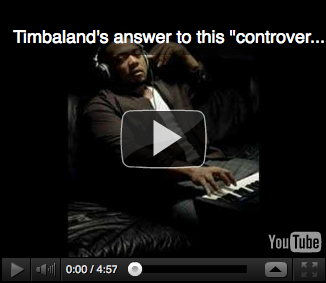Music in Review; Diamanda Galas
By Bernard Holland
The Kitchen 512 West 19th Street
Diamanda Galas’s “Plague Mass” has a pliancy that allows it to shrink or swell on demand. In October, Ms. Galas staged her raging one-woman jeremiad about AIDS at the Cathedral of St. John the Divine, using the size and vast echo of this church to achieve a kind of distant grandeur — a cryptoliturgical ambiance colored by the sensationalism of a stadium rock concert.
Now she has taken her 12-part recitation of singing, shrieks, expectorating shouts and mumbles to the Kitchen. The first performance was on Wednesday evening, and Ms. Galas can be seen again tomorrow, Tuesday, Thursday and next Saturday.
In this decidedly smaller space, Ms. Galas retains the basic props of altar, pulpit and baptismal font (from which she bathes herself with symbolic blood). There are also the carefully honed lighting and recorded accompaniments. The first casts her bare-breasted body in various lurid colors. The second offers pounding drums, hospital-like sound effects and Ms. Galas’s own voice, with the latter offering occasional respite from her intense real-time labors.
Extravagance is Ms. Galas’s stock in trade; anger is her fuel. Her resentment — toward an unjust God, a prejudiced clergy and a persecuting public — is released by an original style that grows directly from black gospel music and preaching, in which traditional barriers between song and raw emotion are breached. At her best, Ms. Galas offers a hair-raising sense of anguish and is probably more suited to this smaller, subtler space — one that permits moments of quiet bewilderment to go along with the screams of pain.
The edge of violence in every sound Ms. Galas makes expresses both her great purgative powers and her spiritual limitations. For she operates here in a world where healing is needed and there is little healing in hatred and indignation alone. Violence takes no sides. Like a stray dog, it is ready to take up with the next master who comes along.
The Immortal Diamanda Galás: Still Wild, Still Extreme
by Louise Brown
Vice Magazine, NOISEY
Read here: http://noisey.vice.com/blog/diamanda-galas-interview-2016

Vena Cava
September 6, 1993
UK LP/CD Mute STUMM119
US CD Mute/Elektra 61459
alternate covers
Tracklist:
1. untitled
2. untitled
3. untitled
4. untitled
5. untitled
6. untitled
7. untitled
Produced by Eric Liljestrand.
Performance recorded at The Kitchen, February/March 1992.
Diamanda Galás: Museum of Contemporary Art, Chicago, Illinois
By Bob Gendron
Diamanda Galás: The Extended Voice as Singing Id
By Mark N. Grant
Published in New Music Box (August, 2007)
Before the late 20th century, Western art only infrequently depicted violent cruelty and transgressive emotion. Sure, Picasso painted Guernica, and Gloucester gets his eyes gouged out live on stage in Shakespeare’s King Lear. But in most art and literature, we didn’t get Molly Bloom-like interior monologues telling us at epic length what it feels like to be murdered or tortured. Instead, the extremis states of emotional pain were written, painted, or musicalized in a stylized, framed manner by even the most graphically truthful artists. Even the rage of the blues, while deeply emotional, is contained within a certain temperature range. Socially, too, we are all acculturated to be too polite to let it all hang out when we grieve a loved one’s death or even a lover’s rejection—we’re taught to “hold it in” from earliest infantile toilet training.
Singer Diamanda Galás jumps over all these barricades. She is an aesthetic revolutionary.
Techniques of extended voice production are not new. A German-Jewish voice teacher named Alfred Wolfsohn (1896-1962), serving as a stretcher carrier during World War I, was scarred for life by hearing the extreme vocalizations of the wounded and dying soldiers he tended to. He escaped Nazi Germany in 1939 and settled in London where he taught a vocal method that enabled both men and women not only to extend their ranges to multiple octaves, but to employ the wartime death cry as a natural tool of vocal technique and emotional integration. Wolfsohn’s students Marita Günther and Roy Hart were listed in early editions of the Guinness Book of World Records for their freak ranges; Hart was said to be able to sing eight octaves, starting below the range of the piano. The South African Hart eventually became the singer in the premiere of Peter Maxwell Davies’s Eight Songs for a Mad King (1969).
In her show at the Highline Ballroom on August 19, Diamanda Galás accompanied herself on the piano in an hour’s set of ten torch songs. But to say that her show merely consisted of her “covering” blues and torch songs is like saying an avalanche consists of a few hoppity-skippity pebbles. This was Torch Song Raised to Metaphysical Howl Against the Cosmic Void of Unlove. It was like taking Laurence Olivier’s famous blood-curdling howl as Oedipus Rex—at the moment when Oedipus realizes he has copulated with his own mother—and extending that howl to the crack of doom, to a Sisyphean eternity.
Part exorcist, part Pentecostal channeler, part Antonin Artaud, part Tibetan monk chanting “om” sound-processed to glass-shattering decibels, the regal, Goth-like Galás is the incarnation of the mythological Lilith, the she-demon as singing shaman. The keening of funerals becomes a kind of complete A-to-Z musical language in Galás’s vocal expression. Her vocal arsenal on this occasion seemed to include multiphonics, vocal double-stops (at an interval of an octave?), and vibratos within vibratos upon vibratos, all enhanced by wall-shaking amplification, echolalic sound delays, synesthetic strobe lights, and a smoke machine. Like Yma Sumac, she’ll shift without a break from a subcontralto that verges on Tuvan throat singing to a high lyric/coloratura. But Sumac was merely exotic; Galás is primal. Where other singers run out of breath on a single long note, Galás, iron-lunged and with titanium-plated vocal cords, actually redoubles her wind and intensity, emitting unearthly volleys of gargoylish “vocal fry” roulades as if they were bel canto fiorature.
In Freudian terms (which Ms. Galás has said she rejects), Galás is an “id” singing without mediation from the ego or superego. She doesn’t care if the lyrics are heard clearly; she only needs to sing the “id” subtext, because she’s already swallowed the song text so wholly into her expressive DNA that the meaning is clear gesturally. Galás carries Stanislavsky’s method of emotional truth to a logical extreme neither he nor Duse nor Lee Strasberg ever dreamed of. I have rarely heard such power of expression commanded by a single performer. Perhaps the most remarkable thing is that she can express these centrifugal emotions and still compose herself after each song without disintegrating onstage.
(more…)
DIAMANDA VS TIMBALAND (Slovakian Translation)
______________________________________
______________________________________
„Žijem v Amerike!” Timbaland
„Pozri sa na moju tvár, ja nepoznám ICH tváre,“ odpovedá pán Timbaland bielemu novinárovi riťolezovi na otázku o vykrádaní skupiny chudobných cudzincov – Egypťanov, Palestínčanov, Grékov z Mikrázie – áno, teraz hovorím o svojich krajanoch. Ty nie si môj Krajan, podvodník,
tak si dávaj pozor, ty hanba čiernej rasy, „lebo inak všetkému urobíme koniec.“
Pamätáš si poslednú časť tej vety? Nie, nepamätáš, a prečo asi? Pretože nemáš žiadne vzdelanie. Pretože zlodej je zlodej, pretože nevie nič a preto potrebuje vykrádať majstrov, ktorí sa učili tridsať rokov komponovať hudbu, ktorú ty kradneš. Ale pozri sa na to, ty karikatúra…
Ty MA nevlastníš a ja nemám nič, len čas, aby som dojebala tvoju reputáciu, pretože ty a ja vystupujeme na pódiu, ale čo môžeš TY skutočne robiť? Sedieť tam ako lenivý tučniak so svojou klávesnicou z K-martu, zatiaľ čo ja si idem vyspievať riť, a ty so svojou klávesnicou na kolenách spievaš a hráš mikrázijskú hudbu a Mohammeda Abdel Wahaba, hudbu, ktorú dokážeš len kradnúť. Mnohí z tých chlapcov stále žijú, ty somár. Ty = hojdací koník. Ty so MNOU nemôžeš ani súťažiť. Ty radšej onanuj v tme, kde sa dobre „komponuje“ ďalší ľahký kúsok od mojich bratov – pre Jay Z „PIMPIN´ IT“ – ku ktorému nie si schopný ani napísať text, Bling Bling.
Áno, ty máš o ľuďoch rovnaké zmýšľanie ako všetci zlodeji, ktorí páchajú kultúrnu genocídu – že sú „bezmenní“: CHCEM to, čo máš ty, ale nechcem ťa poznať: ty = nič. Ale moje meno musí byť napísané aj na tvojom hovne, človeče. Ja mám termíny, chápeš? Som profík.
Rozhodne si to môžem zobrať, tak to vzdaj, ty kurva. Toto je ZNÁSILNENIE. ZNÁSILŇUJÚCA HUDBA (RAPE MUSIC), vieš? HAHAHAHAHA. Tak roztiahni tie fúzy a ritnú dierku tiež.
„A vlastne, ja som Američan. A ty, ktovie, odkiaľ si?“ Áno, ty a Dick Cheney ste vždy boli rovnakí kokoti. Ani on nevie, kde je Stredný Východ. A môžeš si byť sakra istý, že nevie povedať ani slovo v jazyku Arabov alebo Privandrovalcov, ktorých Amerika tak veľmi nenávidí a ktorým klame. Zoberme tvoje prsia do Iraku, kde z nich bude žiť 16 členná rodina viac ako sedem dní, ty BRAV. To by bol férový obchod, až na otrávené jedlo zo všetkých tých recyklovaných BIG MACOV, ktoré ti dodávajú Geffenove cateringové služby od roku 2000. A vlastne, „ktovie, kto SÚ tí ľudia?“
There we GO. There we GO. There we GO. So svojou hudbou môžeš robiť reklamy na Tampax, ty-môj-ne-brat.
Ja som z Byzancie. TY? Ty, yo, vieš, ty z Blingu. Takto si nazýval našu Byzanciu, keď si kradol minimálne desať rokov so svojou pózou debilného analfabeta blingerov zo ZLODEJSKEJ TELEVÍZIE, tých, ktorí si prenajímajú knižnicu od firmy The Strand kvôli show, takže potom môžu hodinu vyzerať ako gramotní. A pravdepodobne povedia: „Ja mám Aristotela aj Platóna, slávnych bratov, vieš, svetová klasa, čo zmenili svet.“
To boli Gréci, ty hlupák. Ctím si tvoj ľud, keď uvádzam každého skladateľa, ktorého som hrala a spievala, rovnako ako si ctím svoj vlastný ľud. Ty si samozrejme nevážiš ani svoj ľud. POSLEDNÍ BÁSNICI? Je mi jasné, že si o nich nikdy nepočul. Nepoznám ich mená, takže ak si od nich niečo vezmem, čo môžem robiť? Timbaland vraví, „Pozri sa na moju tvár.“ (Ja som slávny človek: komu na nich záleží? Môžu byť šťastní, že sa zaujímam aspoň o ich hovno. HAHAHAHAHA.) „Pozri sa na moju tvár, ja ani nepoznám ich tváre!“ A biely novinár riťolez kváka, teraz má hlavu fakt blízko Timbalandovho vtáka. Pozrite sa na toho obézneho BRAVA, ako sa opiera o svoju elektrickú klávesnicu. „Už ťa niekedy niekto ošklbal?“ pýta sa biely novinár. „Ó áno, to iba znamená, že všetko, o čom rozmýšľaš, som JA. Jasné, ľudia vždy kradnú moje bíty.“
Mám to. Tie bíty sú príliš ŤAŽKÉ, čo bratku?
Nemyslím si to. Ťažšie, než ďalšie tvoje dve veci, ale pozrime sa na to – je to primálo, prineskoro a je to prislabé – a aj príliš zlé, môj-ne-brat, pretože ja by som mohla zahrať tvoje dva bíty lopatou na klavíri a pritom sledovať telenovely a čistiť WC.
Najväčší problém s tvojím samplovacím LW(u)B(e) PRÍSTROJOM je, že potom naša hudba zapácha od tvojho hovna. Rozlišovacia schopnosť na hovno a ešte väčšia bezohľadnosť. Trochu dievčenské dolné obrátky, nemám pravdu, že nízke?
Ty si zmenil naše Zlato! na Skládku Fekálií Pána Tučniaka, ty tupolev. Ty, pán človek, ty BRAV, a tak moje NEČISTÉ OKO SUPERNOVY spočíva na tebe. Ja mám VEĽA času, celý ŽIVOT zvyšného času čaká na naše stretnutie. Tak DÁVAJ BACHA. Aby sme sa TY a JA neocitli sami.
TA MATIA SOU? 666, jebo…
DIAMANDA GALAS
NEW YORK CITY
-Slovakian translation by Maros Rovnak
Diamanda Galás: Guilty Guilty Guilty
by Tom De Morr
Diamanda Galás: Guilty Guilty Guilty
by Matthew Moyer
November 29, 2008









